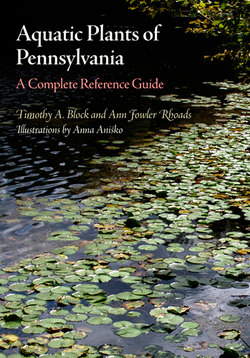Читать книгу Aquatic Plants of Pennsylvania - Timothy A. Block - Страница 8
На сайте Литреса книга снята с продажи.
ОглавлениеPreface
Purpose of the Book
This book is intended to foster an appreciation for the diversity of native aquatic plants and their role in aquatic ecosystems. We have included information to help readers distinguish major groups of aquatic plants by growth form and habitat relationships. The identification keys, descriptions, and illustrations will assist users in identifying plants to species, a necessary step in assessing the status of a body of water.
The book also includes information about endangered, threatened, and rare aquatic plants as well as invasive exotic species that have colonized lakes, ponds, and streams. Species descriptions include information on ethnobotanical uses (Moerman 2000) and wildlife value (Martin et al. 1961). Management issues and concerns are also discussed.
How to Use the Book
The book includes identification keys, which consist of a series of paired statements. By selecting the statement that best describes the sample, you can proceed through a sequence of steps to identification.
Species descriptions were drawn from our own extensive experience with the aquatic plants of Pennsylvania and from references and sources listed in the back of the book. References that pertain to a single species are cited in the description of that plant. All species descriptions are accompanied by line art and photographs for further help in confirming the identity of a specimen. Most of the photographs are by the authors; the few exceptions are noted. The botanical illustrations by Anna Aniśko were drawn from live material or herbarium specimens under the direction of the authors.
Distribution maps for each species were prepared using herbarium specimen records from the Pennsylvania Flora Database (2010) plus records from a 2001–2002 study of glacial lakes of northwestern Pennsylvania (Grund undated) and additional observations we made during an eight year study of lakes of eastern Pennsylvania 2000–2007.
Species with similar patterns of growth are grouped together for ease of comparison. A taxonomic list of the plants treated in the book is included in the Appendix.
